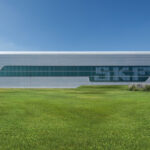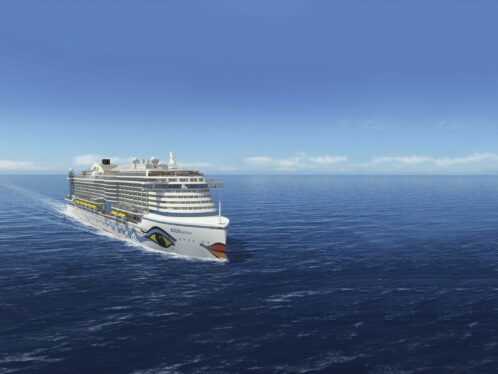
Swell solution
French technology firm Symétrie makes hexapods – parallel kinematic systems for testing products and simulating swell. The devices are in high demand for use in the space, naval and aeronautical industries, as well as for many other applications.
Deep in the south of France lies the city of Nîmes, with its impressive ancient monuments. The city was founded by enterprising Romans, who showed great engineering skill in its construction, and today it is still home to stunning innovation. In the workshops of the high-tech company Symétrie, six-legged, articulated machines, known as hexapods, are being developed and built. In 2001, Olivier Lapierre and partner Thierry Roux formed Symétrie after realizing the hexapods they had been working on at the French National Laboratory of Metrology and Tests could be adapted to other applications. “We took another direction – from high-measuring hexapods to high-precision positioning and dynamic-motion hexapods,” says Lapierre, who is now Symétrie’s CEO. “The flexibility in the parallel kinematics of a hexapod that could be infinitely scalable opened up new ways of using simulators in various fields.” The pair was soon joined by a former colleague, Gilles Diolez, who came to the new company to fulfil his doctoral thesis centring on geometrical positioning in the construction of new robot tools. Today, Symétrie provides hexapod solutions for use in such industries as shipbuilding, aeronautics, automotive, optics, medical, nuclear and electronics, as well as in research centres. Hexapods incorporate six actuators and are capable of moving in any direction or orientation, generating strong and dynamic motions. Customers often call on Symétrie to provide technical solutions that have never been produced before. To achieve this, the company works with parts suppliers that are both technically knowledgeable and open to new ideas. One such company is SKF Transrol, situated in Chambéry, France. SKF project manager Olivier Fernoux thoroughly embraced the challenge of integrating SKF actuators into a Symétrie hexapod. Lapierre recalls, “SKF showed us great interest and respect right from the beginning. It took a few volleys, and both sides progressed immensely.” The result was the swell-simulating hexapod that was dubbed Sirocco after one of the many winds that blow through Nîmes. Symétrie’s customer, the French maritime engineering company GTT (Gaztransport & Technigaz), was impressed with Sirocco and in subsequent years acquired several other hexapods of various sizes to complete its test facilities. Symétrie’s swell-simulation hexapods enable GTT to study the impact of moving liquids onto the isolation membrane that GTT has designed for the maritime transport of liquid natural gas. Today, Symétrie boasts a 20-strong team of engineers working on solutions involving mechanical, electronic and software engineering. Two-thirds of new recruits to the company come after completing their final exams at university. The company’s workshops have recently been extended by 400 square metres to accommodate larger hexapods and test benches. Adjoining laboratories contain smaller hexapods, such as the Sures, a model used to position telescope mirrors with a precision of less than 0.1 micron in deviation. Symétrie is expanding and looking for international development, but at the same time the company aims to retain the same corporate structure in order to stay flexible and inventive. Turnover grew by 50 percent between 2011 and 2012, increasing to 4.1 million euros. Lapierre sees space applications as the next frontier for hexapods. “The next generation of space telescopes will have bigger mirrors that will need to be precisely positioned during operation,” he says.






